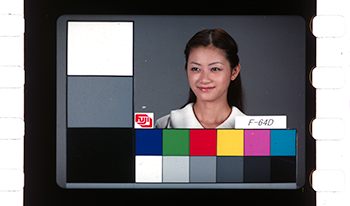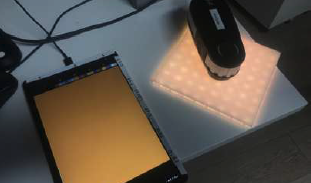
The digitisation of analogue film is critical for cultural heritage preservation, as film deteriorates over time due to environmental factors and analogue projectors are becoming obsolete. Conventional RGB scanning methods fail to fully capture the spectral complexity of film, making multispectral imaging (MSI) a feasible alternative. However, MSI faces challenges due to the limited availability of narrow-band LEDs in certain spectral regions and inherent variability in LED emissions. Aiming to minimise colour reproduction errors in film scanning, this study investigates the optimisation of LED spectral band selection and the impact of LED spectra variability. Informed by the optimised bands, multiple market-based LED sets were further evaluated using MSI capture simulations, with the 7-band and 8-band setups achieving good colour accuracy and showing rather low sensitivity to LED spectral variability. A physical multispectral capture of a film photograph demonstrated a good agreement between the capture simulation and the real results.

For a few years, the automotive industry has produced new cars with continuous changing display models, this by combining display sizes, forms, and technologies all together to bring new experiences to the users. In this paper we will present the color matching solution implemented for a new car display system where regular LCD display technology and LED lighting tiles are mixed together. The solution we proposed is based on accepted display model providing the transformation device RGB space to CIE XYZ independent color space and in reverse. The approach we followed choose the LCD display as reference, then transformation matrix is derived to modify the RGB LED control values. Once the color matching operation is applied, the color difference between the two display areas is greatly reduced.

The color accuracy of an LED-based multispectral imaging strategy has been evaluated with respect to the number of spectral bands used to build a color profile and render the final image. Images were captured under select illumination conditions provided by 10-channel LED light sources. First, the imaging system was characterized in its full 10-band capacity, in which an image was captured under illumination by each of the 10 LEDs in turn, and the full set used to derive a system profile. Then, the system was characterized in increasingly reduced capacities, obtained by reducing the number of bands in two ways. In one approach, image bands were systematically removed from the full 10-band set. In the other, images were captured under illumination by groups of several of the LEDs at once. For both approaches, the system was characterized using different combinations of image bands until the optimal set, giving the highest color accuracy, was determined when a total of only 9, 8, 7, or 6 bands was used to derive the profile. The results indicate that color accuracy is nearly equivalent when rendering images based on the optimal combination of anywhere from 6 to 10 spectral bands, and is maintained at a higher level than that of conventional RGB imaging. This information is a first step toward informing the development of practical LED-based multispectral imaging strategies that make spectral image capture simpler and more efficient for heritage digitization workflows.

In 2013 the European Metrology Research Program (EMRP) funded a 36 months research project, "Multidimensional Reflectometry for Industry, xD-Reflect", to investigate the macroscopic optical properties related to visual appearance of modern surfaces. During the three years duration of the project, over in August 2016, several visual experiments have been performed to investigate appearance of materials with goniochromatic and sparkling effects. Metal-flakes produce shiny effects whose definitions, quantities and metrological characterizations are still under development. This paper relates to the measurement and visual estimation of graininess and brightness perceived of metal flakes achromatic pigments materials. The subjective ranking on graininess and brightness of three different sample sets different for particles shape (silver dollar and corn-flakes) and dimension, were compared under similar viewing conditions on two commercial lighting booths, one based on LED lighting and one on fluorescent light, both reproducing CIE D65 illuminating conditions. The subjective rankings were compared with the graininess measured with a Byk-Mac instrument and the luminance measured with a luminancemeter in the experimental conditions inside both lighting booths. The performances of the two lighting cabinets and of the two different flake shapes were also compared. The results are useful both for shops lighting arrangements and industrial panelist investigations.